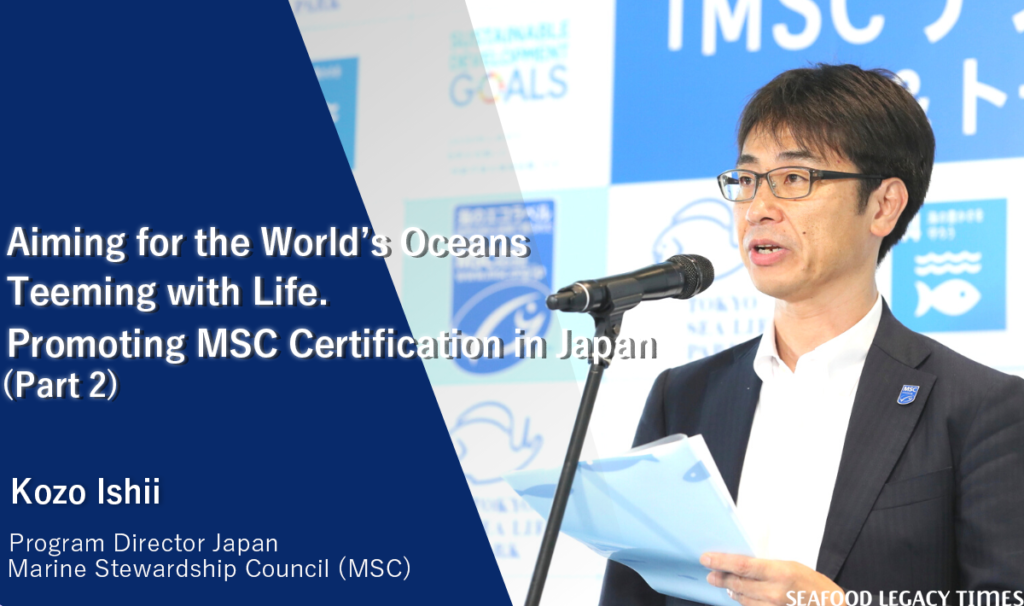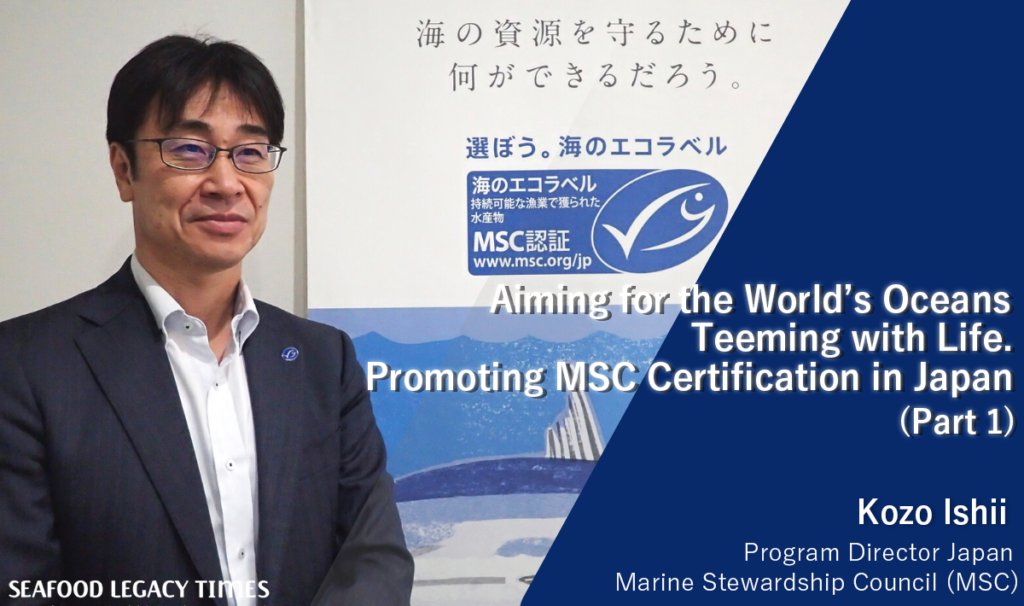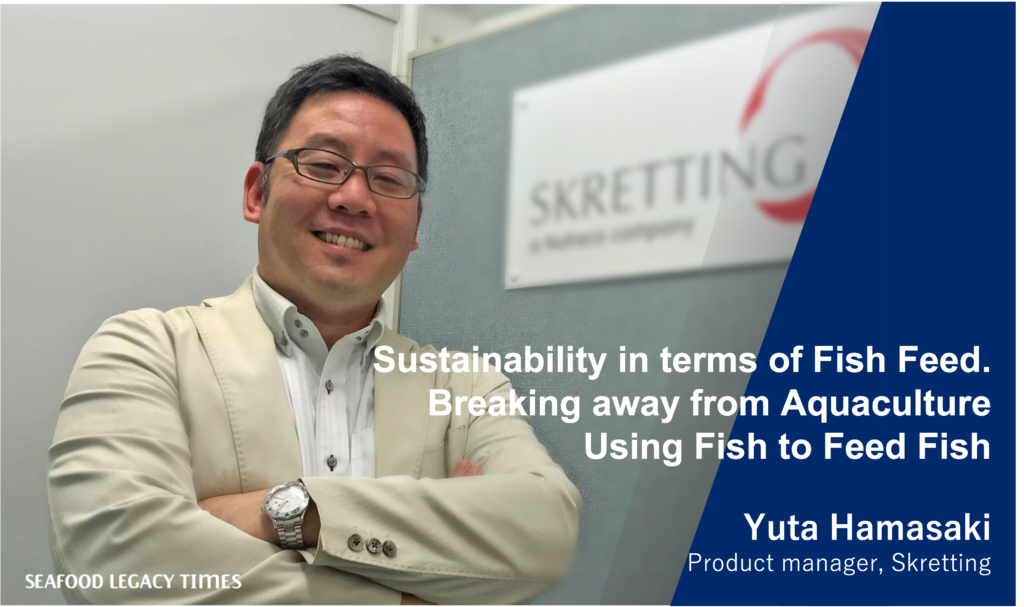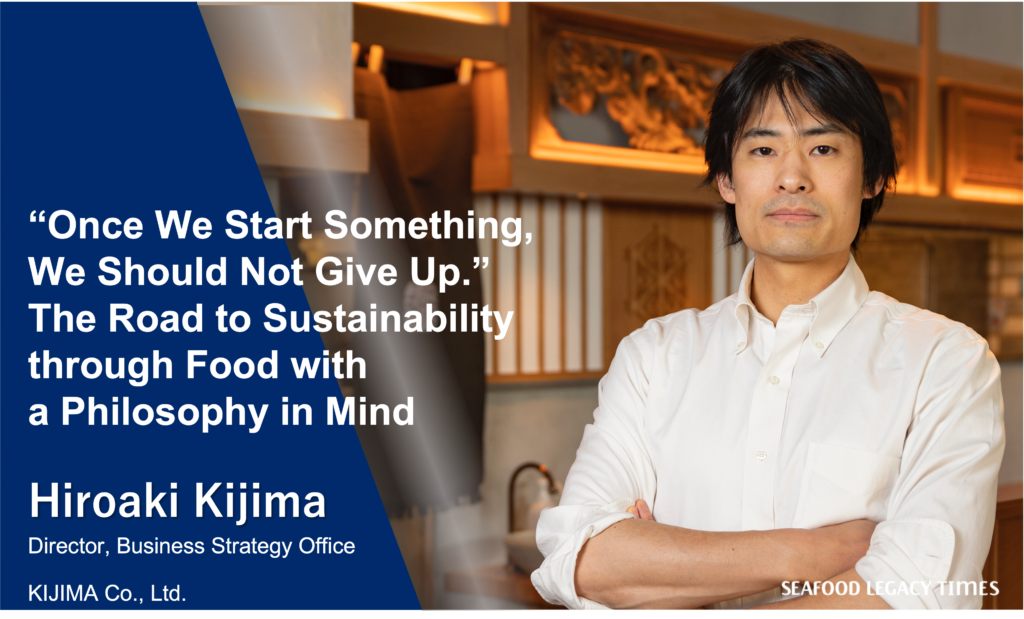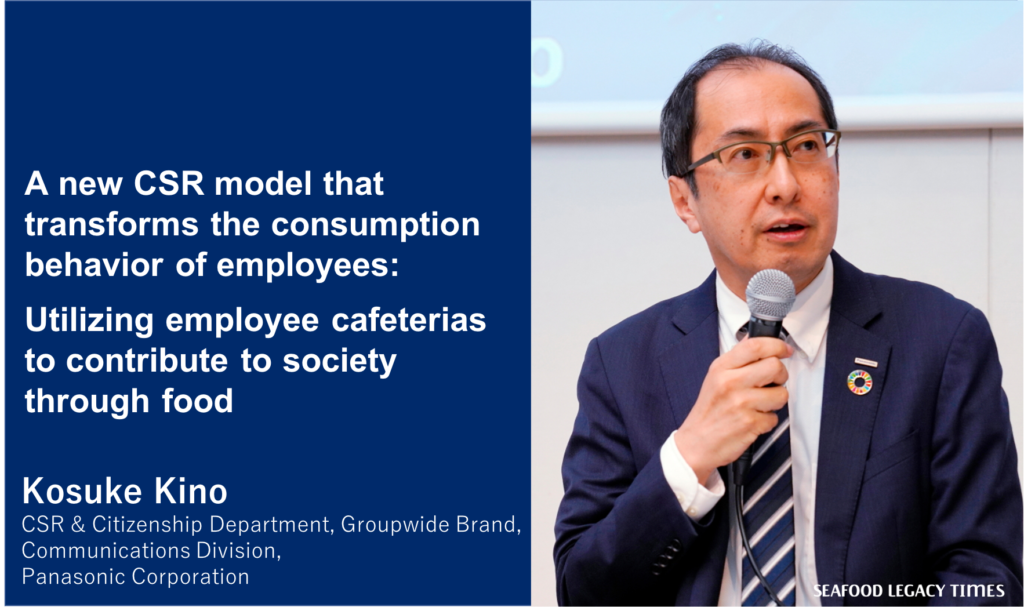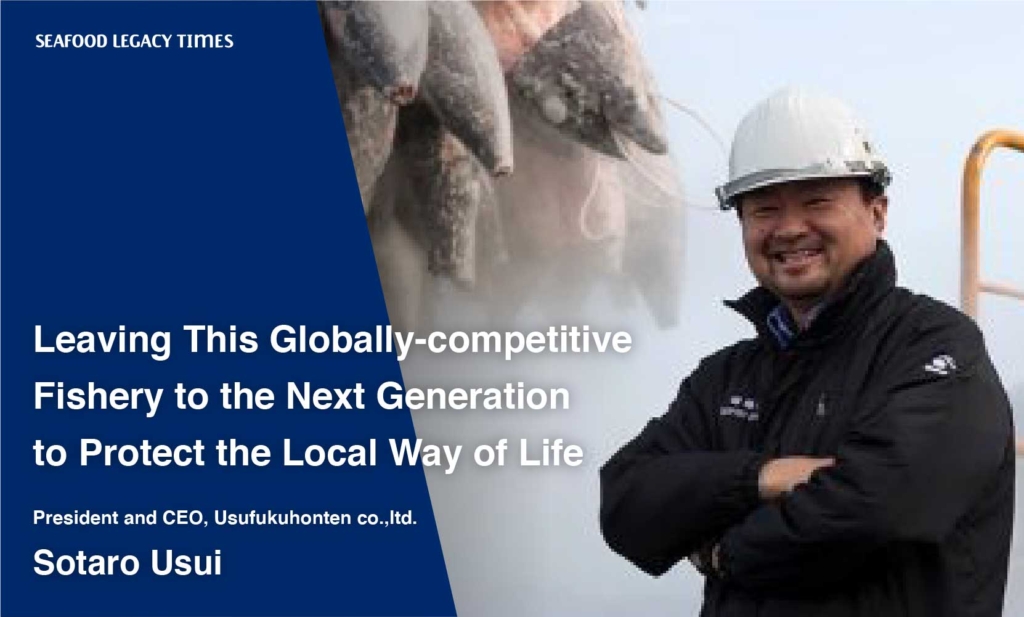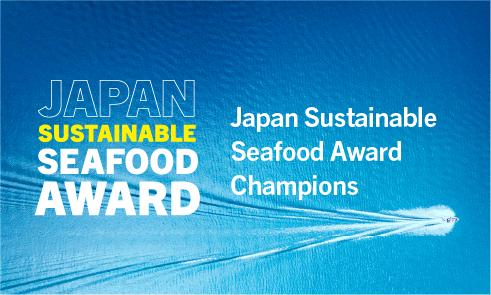

Fish and Planet is a social enterprise founded in 2022 with the aim of accelerating the transition to a sustainable and socially responsible fishing and aquaculture industry. For our first project, we provided practical and financial support for Japan’s first ASC-MSC seaweed (algae) certification* of seaweed (“wakame”) and kelp (“konbu” or “kombu”) by young producers in Jusanhama, Ishinomaki, Miyagi Prefecture (located on the east coast of Japan’s biggest island, Honshu, north of Tokyo), in cooperation with Ginza Daishin, a long-established tempura restaurant.
The project was awarded the first prize in the leadership category at the 4th Japan Sustainable Seafood Summit (sponsored by the Japan Sustainable Seafood Awards Executive Committee) for its focus on seaweed, which plays a vital role in ocean sustainability, and for its forward-thinking approach in obtaining certification through collaboration with a diverse group of mainly young fishermen.
We interviewed Mr. Hiroshi Norito, Managing Director of Fish and Planet, who has played a leading role in promoting the project, to learn more about the motivation behind the project and their future plans.
Hiroshi Norito
As the seventh generation owner of the 190-year-old Ginza Daishin, a fresh fish retailer and tempura restaurant founded in the Edo period (1603-1867) in Asakusa, Tokyo, and now operating in Ginza (now Azabu), he is committed to the sustainable and socially responsible fishing and aquaculture industry and the transmission of Japan’s tempura culture. After graduating from the Tokyo Institute of Technology, he earned a master’s degree in environmental management from Duke University (USA). His previous experience includes M&A advisory work in the investment banking division of Daiwa Securities SMBC (now Daiwa Securities) in Tokyo and New York, before starting his own international e-commerce company.
――Can you first tell us how Fish and Planet got started?
I have always wanted to work in sustainability, having worked on environment-related subjects in college and graduate school. But the big turning point was when I got married and took over Ginza Daishin, which was run by my wife’s family.
Ginza Daishin is a fresh fish retailer founded in the Edo period and has been operating as a tempura restaurant in Ginza since the second generation, and in the Hiroo neighborhood (Azabu) since the sixth generation. The business is now run by my wife’s parents, and we are the seventh generation of owners.
My father-in-law is very interested in sustainable fishing, and he fully supports this project because he believes that the primary industry is an essential source of the country’s wealth. And of course, as we operate a tempura restaurant, we feel a sense of urgency in addressing the issue of marine products.
While I am not working at the tempura restaurants at the moment, I see Fish and Planet as a second start-up, working hand in hand with Ginza Daishin to take on new challenges.
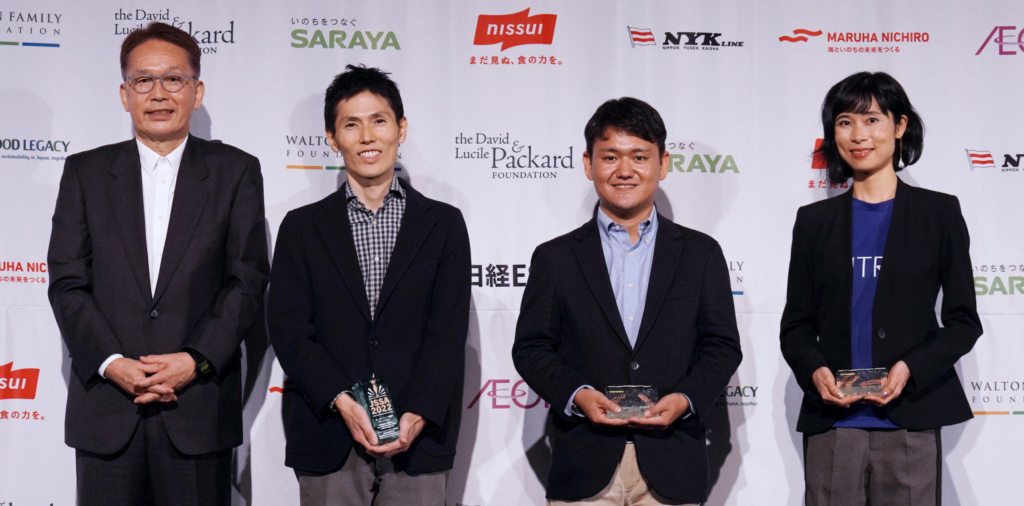 Mr. Norito (second from the left) photographed with the finalists in the leadership category after receiving their trophies at the 4th Japan Sustainable Seafood Awards
Mr. Norito (second from the left) photographed with the finalists in the leadership category after receiving their trophies at the 4th Japan Sustainable Seafood Awards
――More specifically, what did you have in mind when you started the company?
Through gathering information on marine issues such as the shortage of qualified fishermen and the depletion of marine resources, I came to the realization that if we consider restaurants as downstream, the fundamental problems cannot be solved unless we address them from upstream.
For many years now, fishermen have been saying that they can’t “let their sons take over” the fishing industry because it is not profitable anymore. I want to change that. If their son wants one day to follow in their footsteps in the fishing industry, I want to be able to encourage him to do it.
Currently, because the fishery industry is struggling, obtaining certification and getting the “fisheries eco-label” is difficult, and in order to be profitable, the industry is trying to “catch as much fish as possible while it can”. The result is that resources are being depleted. We have to solve that problem before we can proceed to the next step.
――So you realized that you had to start by making the producers’ lives better first.
Exactly. And to really solve the problem, I knew I had to become personally involved in the process. So, instead of acting as a consultant, I would do the hands-on work of getting the certification, and bear the financial burden, and I would also have my own stocks of products, which I would then commercialize and sell.
There are risks, but I think that I have to get involved in that way to be committed to a real solution. The real work begins with getting the certification and then selling the products… It is only the beginning.
 I realized that if we are to solve the sustainability issues for ocean and fishery products, we must address them at the production level.
I realized that if we are to solve the sustainability issues for ocean and fishery products, we must address them at the production level.
――For your award-winning ASC certification initiative for seaweed and kelp, could you tell us how you came to meet the fishermen in Ishinomaki?
It all started when I met Mr. Katsuta Abe, himself a seaweed fisherman and the head of Fisherman Japan, a non-profit organization working to transform the fishing industry in Miyagi Prefecture, after being introduced to him by someone from ASC Japan. That was in September of 2020.
In fact, Mr. Abe had been thinking about acquiring an ASC for several years before this, but had given up on the idea, believing that the benefits would not be worth the cost. If I could sell at a higher price, it would be a different story, he told me. That’s when we decided to work together.
For example, some major volume retailers in Japan would be interested in buying marine products that have received international fishery eco-label certifications. However, this alone would not cover the labor and expense of obtaining certification at the production site. Also, international certifications are expensive to maintain after they are obtained. This is simply not enough to make the fishing industry a profitable and attractive profession.
──Why did you decide to obtain certification for seaweed and kelp?
It was the desire to be competitive in the global market. Although seaweed and kelp is produced in Japan, China, and Korea, the products grown in Sanriku are by far the tastiest. They grow thick and crispy because they are cultivated in the open sea, where they are exposed to the waves.
Seaweed remains a largely under-exploited food resource worldwide, as well as highly sought after for its affordability, and there is also the anticipation of a vegetarian and vegan boom in Europe and the United States. Oysters and salmon produced in Europe and the United States also have many certifications. Korea is the first country in the world to have its seaweed and kelp certified by the ASC, our seaweed is the second in the world to be certified, and our kelp is the third in the world to be certified. I think the international market has a lot of potentials still to be explored.
 In terms of taste, Sanriku seaweed and kelp are second to none. We saw great potential in the international market, as “seaweed salad” became a hit at Costco on the West Coast of the U.S.
In terms of taste, Sanriku seaweed and kelp are second to none. We saw great potential in the international market, as “seaweed salad” became a hit at Costco on the West Coast of the U.S.――So, Mr. Abe was a big driving force behind the project.
Absolutely. It was also Mr. Abe who brought together a group of 19 fishermen (including two corporations) on site. The members are all in their 30s and 40s and are childhood friends of Mr. Abe.
Mr. Abe is a producer, but he also sells his own products and was involved in the sixth industrialization of the fishing industry. But the other 18 members are ordinary fishermen. They would ask “What’s certification?”, “Who is Fish and Planet?”, “Is it really going to sell?”. I understood why they were skeptical because until then they had no choice but to sell to the fishermen’s cooperative.
But we were lucky that the members were all from the younger generation. Because they are young, they think about the future. We are aware of the problems we face going forward: fewer fishermen, rising sea temperatures, and fewer fish… But we don’t know what to do about it.
 Getting the certification was a new challenge for a group of young seaweed and kelp producers operating on the Jusanhama coast in Ishinomaki.
Getting the certification was a new challenge for a group of young seaweed and kelp producers operating on the Jusanhama coast in Ishinomaki.
――So you wanted to make something happen to fix this situation.
Exactly. Mr. Abe himself originally hoped to get the certification but was hesitant because he had heard from others who had obtained it how difficult it had been to make it worth the cost, and also because he saw how difficult it was to get it.
But Mr. Abe believes that the sustainable seafood movement will not kick off unless the producers take the initiative, and we both agree on this point. We also believed that getting certified is the best way to add value to the products, and a direct way to generate revenue.
――You acquired the certification as a group.
Generally, certification is obtained by organizations such as companies and fishing cooperatives, which is an easier way to do it. In this case, we consulted with the Jusanhama branch of the fishing cooperative, but they indicated that they were not interested in pursuing the certification, so we said, “Well, then, let’s just do it ourselves.”
ASC started a program for certification by volunteer groups in 2019. The first group to be certified were shrimp farmers in Indonesia. We will be the second group to be certified worldwide.
It is a common problem around the world for small-scale and family-owned fishery and aquaculture operations: they find it difficult to obtain certification, and as a result, they tend to give up on sustainability efforts. While the ASC recognized the need and made it possible for “volunteer groups” to obtain certification, it is significantly more complicated and difficult than obtaining certification as an organization. This has been a challenge that has prevented group certification from moving forward.










-1024x606.png)



_-1024x606.png)

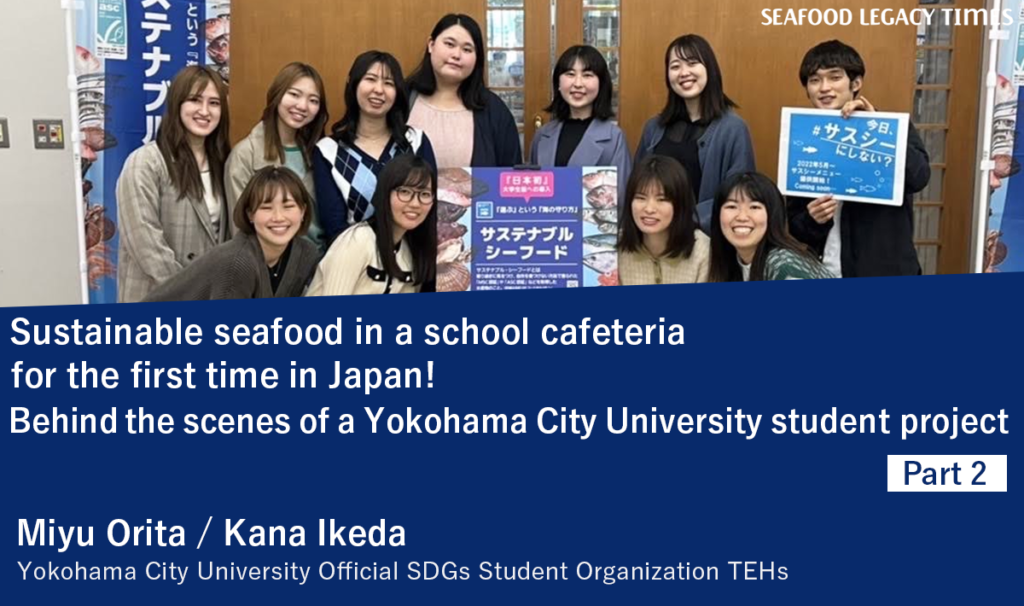

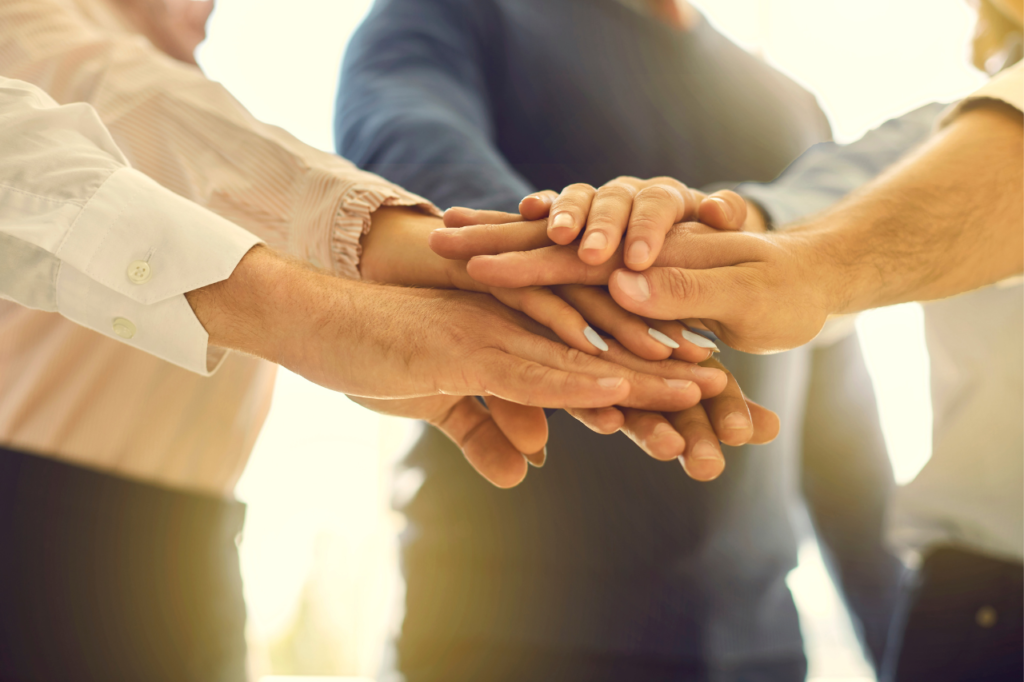














1_修正524-1024x606.png)















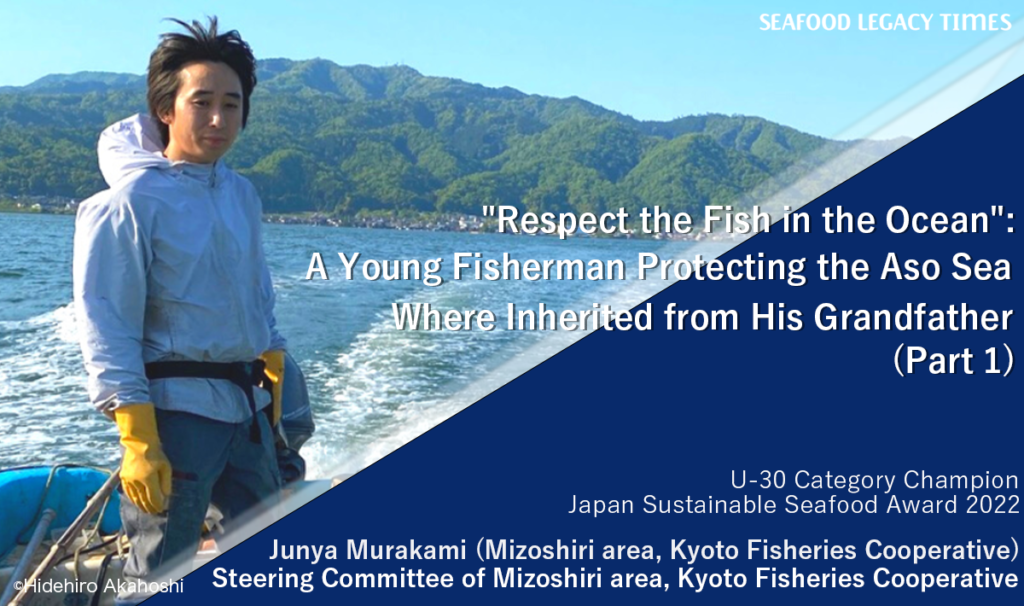
.2-1024x606.png)

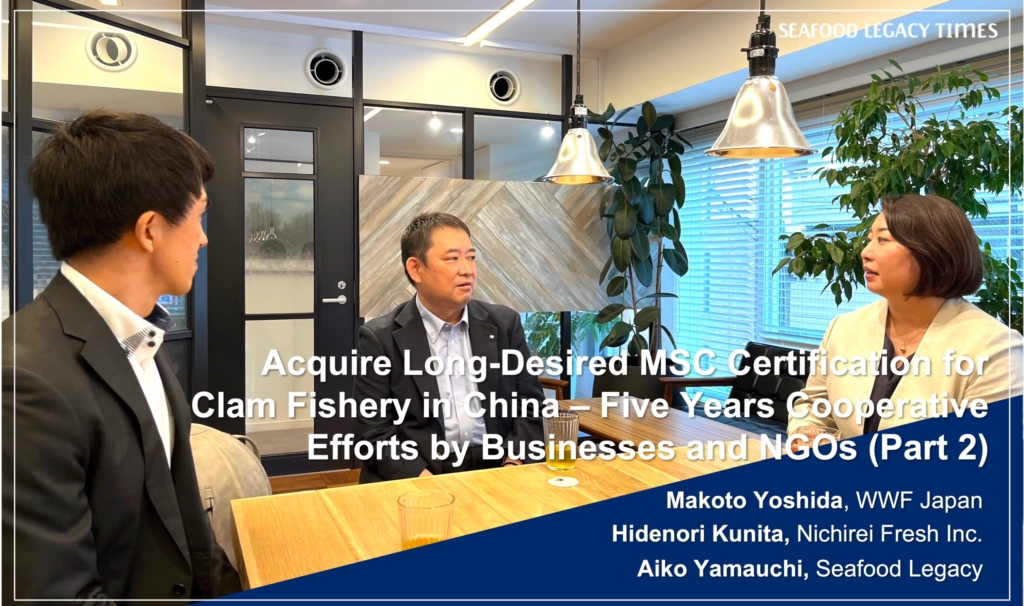











2-1024x606.png)
-1-1024x606.png)
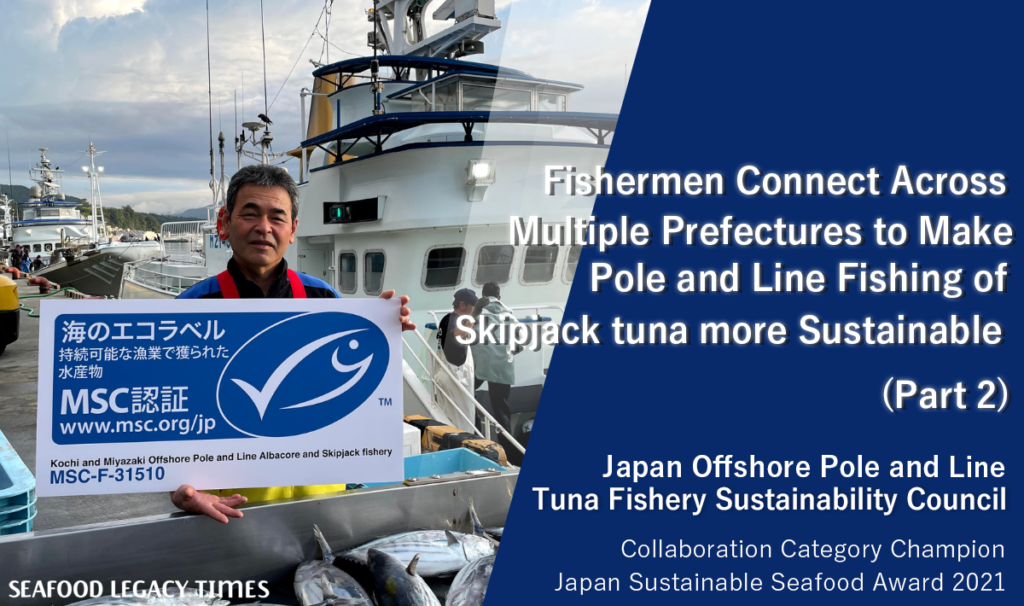
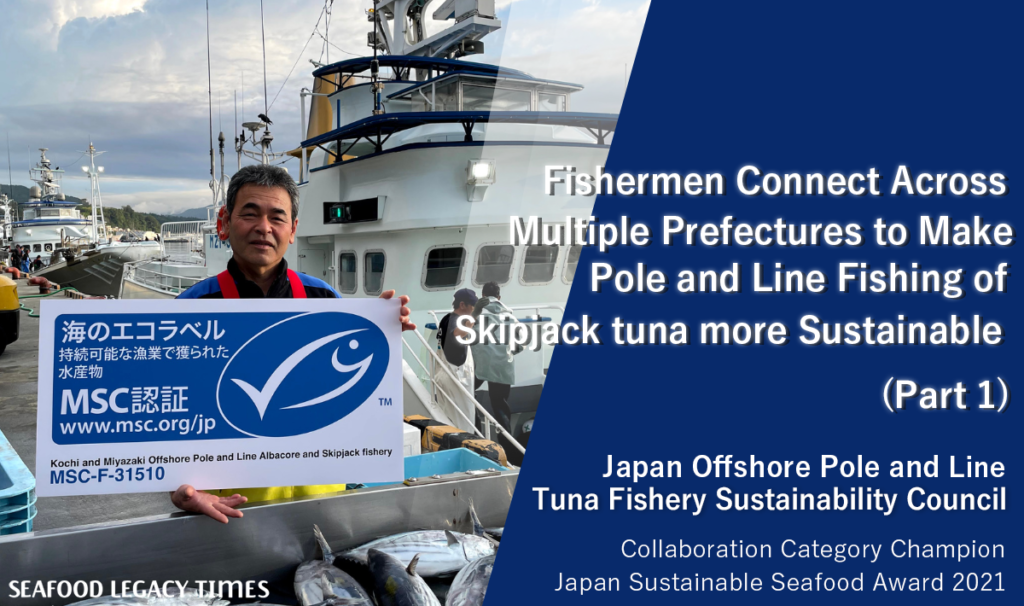


Part2-1024x606.png)
Part1-1024x606.png)
